top of page
Turn your data into scientific illustrations

Different areas of study of Virocells
When a virus infects a cell it transforms it into a Virocell. Virocells can be studied in various areas to ask questions about infection efficiency, cross-kingdom interactions, or interactions with the environment.
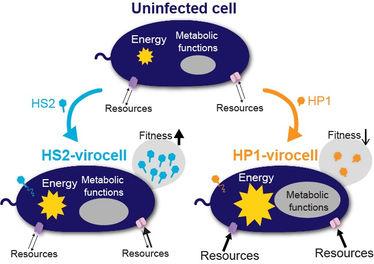
One uninfected cell infected with two different viruses becomes two different virocells.
The top bacterium is independently infected with two different viruses (here called HP1 and HS2) and the resulting virocells are very different from each other.
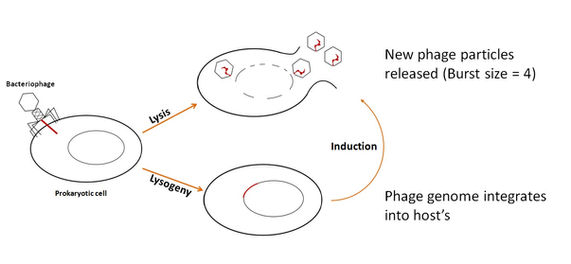
Lysis or lysogeny
One cell infected by a temperate virus can either undergo lysis (top) or lysogeny (bottom). Lysogeny is when the viral genome becomes one with the host genome, either through integration or extrachromosomal.
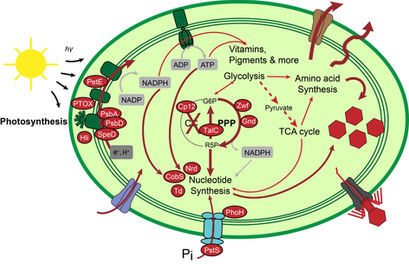
Cyanovirocell metabolic reprogramming
A marine cyanobacterium infected with a virus completely changes its intracellular metabolic processes.

Cyanovirocell metabolic reprogramming under different scenarios.
Marine cyanobacterium in 4 scenarios: (a) uninfected and un-attacked, (b) attacked by a protist, (c) infected by a virus, and (d) infected with a virus while being attacked by a protist.
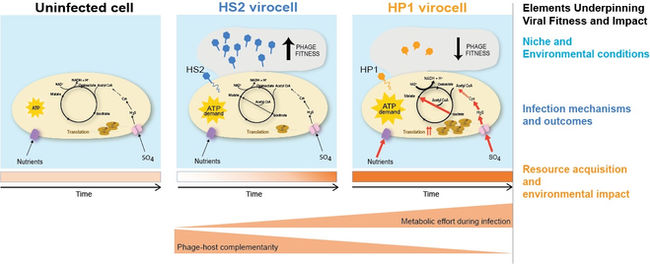
Uninfected cell with 2 viruses becomes two virocells
Left: uninfected cell
Middle: same cell infected with one type of virus.
right: same cell infected with the other type of virus.
Middle: same cell infected with one type of virus.
right: same cell infected with the other type of virus.
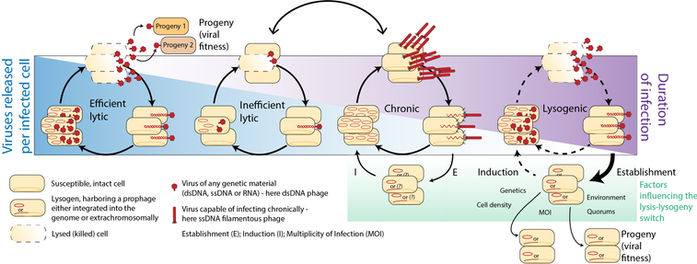
Range of viral infection types and outcomes.
The rules of viral infections are fluid. Viruses can be very efficient, inefficient, temperate (lytic or lysogenic) or chronic.

The stages of an infection cycle
The life cycle of a lytic viral infection consists of 5 steps.
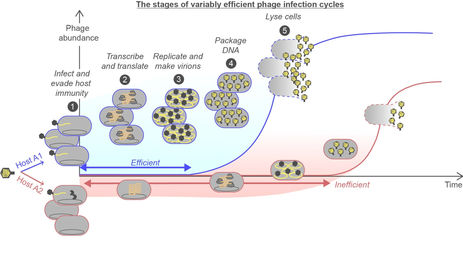
Inefficient and efficient viral infections
Blue is efficient infection, where the virus infects quickly and makes a lot of progeny.
Red is inefficient infection, where the virus is slow at infecting and doesn't produce as much progeny.
Red is inefficient infection, where the virus is slow at infecting and doesn't produce as much progeny.
bottom of page